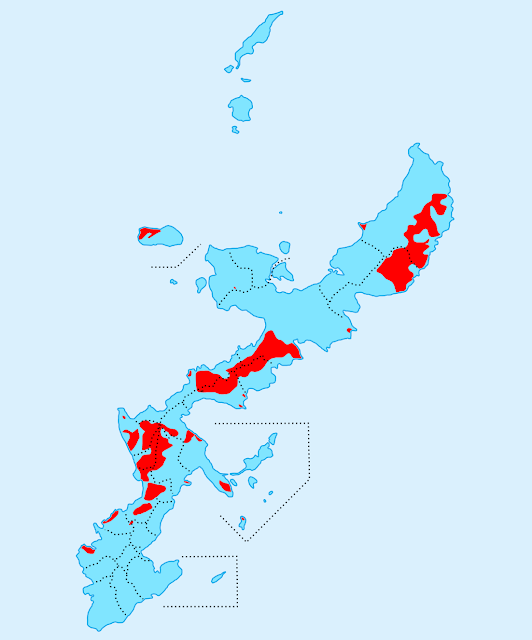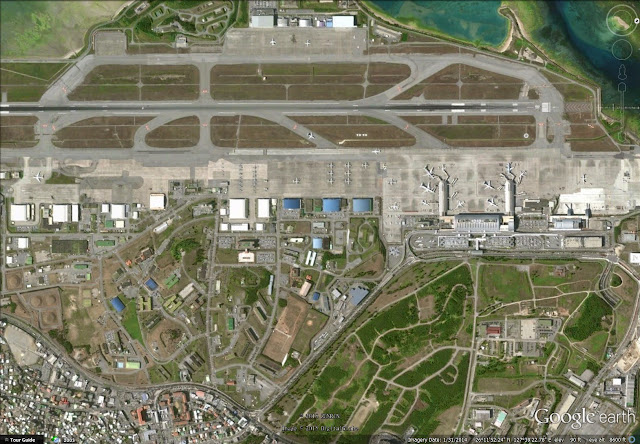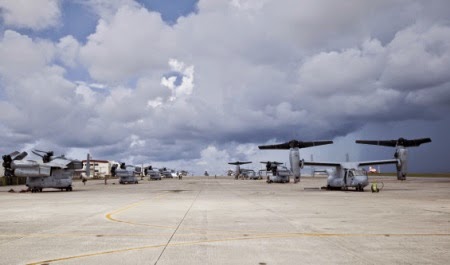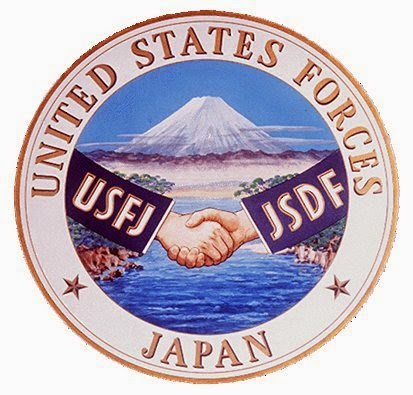 |
| First Flight of the Mitsubishi X-2 on 22nd Apr 2016. Photo credit Akira Uekawa |
Japan's Stealth Fighter Program
Japan has a nascent stealth fighter program run by the Ministry of Defense's Acquisition Technology And Logistic Agency ( ATLA ) for the Japan Air Self Defense Force ( JASDF ) and it is known as the Advanced Technology Demonstrator - X ( ATD-X ) Stealth Fighter Program or 先進技術実証機 senshin gijutsu jisshoki. As the name implies, it is a prototype to test advanced concepts in stealth and other aviation technology that can ultimately be utilized by a future generation fighter design.
Not many countries in the world can boast of having independently embarked on stealth aircraft development. Apart from the United States who is the undisputed leader in stealth technology, only Russia, China and Japan can claim to have truly indigenous stealth fighter programs. Being a Tier 1, Tier2 or Tier 3 partner in the Joint Strike Fighter Program does not count since most of the work is done by the Americans.
The Russian effort has resulted in the Sukhoi PAK-FA ( T-50 ) which is about to enter service this year while the Chinese are said to have the J-20 already in low rate initial production ( LRIP ) and are in an advanced stage with their J-31. This article takes a closer look at how the Japanese are fairing.
Replacing JASDF's Ageing Fighters
The JASDF currently operates a fleet of ageing fighter aircrafts including the Vietnam War era F-4EJ Kai, the F-16 derived F-2 and the F-15J. Back in 2005, they were really keen to have the F-22A as the replacement for some of these old aircrafts, but to safeguard its supremacy in stealth technology, the United States decided not to export their most capable stealth fighter to anyone, not even to their most trusted ally Japan. Instead, the Americans have been pushing everybody to accept the second best option, the problem plagued, expensive and long overdue F-35 Joint Strike Fighter ( JSF ). So, in a way, the Japanese had been forced to develop their own stealth fighter. The ATD-X program was launched.
Meanwhile, with the F-4EJ way beyond its sell-by date, and perhaps alarmed by the emergence of Chinese stealth jets, the Japanese finally decided in 2011 to acquire 42 F-35A JSF as an interim measure to replace the Phantoms. 38 of the 42 F-35A will be assembled by Mitsubishi Heavy Industries in their Nagoya plant. Mitsubishi will also be involved in testing the JSF's stealth against radars, and the experience gained in the development and manufacturing of the F-35 should contribute towards the development of Japan's indigenous stealth fighter.
Mitsubishi Heavy Industries
Mitsubishi Heavy Industries ( MHI 三菱重工 ) is a conglomerate with interests spanning the aerospace, marine, land transport, energy and environment domains. Their products are so diverse that it is almost impossible to list everything. Some of the more prominent ones include the Soryu-class attack submarine, the Mitsubishi Regional Jet ( MRJ ), Atago-class Aegis destroyers, Patriot SAM system and the Type-10 MBT.
All of JASDF's post-war fighter aircrafts had so far been designed or license-produced by MHI, from the F-86 Sabre to the F-104J Starfighter, followed by the F-4EJ Phantom, F-1, F-15J, F-2 and now the F-35.
Of course those who are familiar with military history will tell that Mitsubishi is actually most famous for the long range carrier-borne fighter known as the A6M Zero or the Reisen (零戦). This legendary fighter was designed by aeronautical engineer Jiro Horikoshi ( 堀越二郎 ), and its performance was unmatched by any western combat aircraft at the beginning of World War II, attaining a kill ratio of 12:1. It was extensively used by the Imperial Japanese Navy on the raid on Pearl Harbour in Dec 1941, an event that marked the beginning of the Pacific War.
 |
| 1:72 scale model of the Mitsubishi A6M2b Zero ( Type 21 ). Photo : Hasegawa Model Co. |
So, it is quite obvious that MHI has been a key player when it came to Japanese fighter design and production for close to a century, stretching back to the pre-war years.
Mitsubishi X-2 Stealth Fighter
The X-2 is a single-seat, twin-engine, thrust-vectoring, low-observable technology demonstrator. It has a shape similar to other stealth aircrafts like the F-22 and the PAK-FA with a flat looking body and two outward canting vertical stabilizers. The air intake ducts were shaped to conceal the engine fan blades from radar waves and access panels have serrated edges. In fact it looked like a miniature version of the F-22.
It was initially launched as the ATD-X program following the failure by Japan to acquire an export version of the F-22, the project was under the jurisdiction of the Technical Research and Development Institute ( TRDI ) which was the predecessor of the current ATLA.
Anechoic chamber tests carried out in France in 2005 on a full scale ATD-X model suggested that it had a radar cross section ( RCS ) equivalent to an object the with a size somewhere between that of an insect and a bird. These electromagnetic spectrum reflection and absorption tests were originally intended to be done at a USAF test facility but approval was not granted.
In the spring of 2006, a radio-controlled 1 : 5 scale model of the ATD-X constructed out of carbon fibre reinforced plastic with a length of 3m and width of 2m and a weight of 45kg was first flown at the Multi-Purpose Aerospace Park in the Taikicho District of Hokkaido ( 北海道大樹町 ). A total of 4 such remotely controlled aircrafts were eventually constructed and 40 test flights were conducted until Nov 2007.
Subsequently, the ATD-X program was given the full go ahead in 2007. Mitsubishi Heavy Industries was appointed the main contractor. As usual the early developments were cloaked in secrecy. The stealth prototype was commonly referred to as the Shinshin ( spirit of the heart ).
In order to keep developmental cost low, the X-2 reuses some components from previously developed aircraft types. This included the canopy and the ejection seat from the Kawasaki T-4 intermediate jet trainer which itself was taken from the Mitsubishi F-1 strike fighter. The main and rear landing gears were taken from the Mitsubishi T-2, the jet trainer developed from the F-1.
By 2009 39.4 billion yen had already been invested. 90% of the X-2's components are indigenously manufactured in Japan. Mitsubishi manufactures the fuselage and landing gears, Kawasaki the cockpit and canopy, Fuji the main wing and tail stabilizers, IHI the engines, in total about 220 Japanese aerospace companies supplying several hundred thousand different parts and components.
The ATD-X prototype was officially unveiled on 28th Jan 2016 by which time it had been given the designation X-2.
Advance technology that the ATD-X will test and evaluate includes the usual stuff one would expect for a 5th generation stealth fighter and more :
Low observable or stealth technology, like radar absorbing coating and materials. The body of the aircraft is said to be covered with a layer of new composite material of ceramic and silicon carbide capable of absorbing radar waves. The canopy itself would be emission-proofed with its own special coating.
Second generation AESA radar. Japan is the first country to have an AESA radar installed on a production combat fighter the Mitsubishi F-2 and that was almost twenty years ago. Although initially plagued with problems, the technology had matured and the experience gained by Japan would no doubt be a useful contribution towards the design of a new generation AESA radar.
Thrust vectoring and super-maneuverability. Each engine nozzle have a trio of unusual paddle contraptions similar to what was seen on the German-American X-31 experimental aircraft for vectoring engine thrust.
Indigenously developed high-thrust low by-pass turbofan capable of super-cruising - sustained super-sonic flight without the involvement of afterburners. Some of the experience gained in developing the XF5-1 engine for the X-2 had already been applied to the production F-7-10 engine used by the P-1 maritime patrol aircraft.
Fly-By-Light advance fibre optic flight control system, likely an improved version over the first generation control system used in the P-1. This Integrated Flight Propulsion Control ( IFPC ) links flight control with nozzle and thrust control to enable some form of automatic recovery from combat damage.
Next generation Infra-Red Search and Tract ( IRST ) and radio frequency sensors as well as Head Up Display and Helmet Mounted Display technology.
Advance Electronic Support Measures ( ESM ) and Electronic Countermeasures ( ECM ) suites. Likely electronic attack capability.
The specifications for the X-2 are as follows :
Length : 14.2m
Wingspan 9.1m
Height : 4.5m
Weight : 9.7 tons
Engine : IHI XF5-1 Afterburning Turbofan x 2
 |
| Thrust vectoring paddles of the super-maneuverable X-31 experimental aircraft. Wikipaedia |
 |
| IHI XF5-1 Afterburning Turbofan. Wikipaedia |
 |
| A 1:14 scale transonic (遷音速) wind tunnel model of the X-2, also known as the Shinshin ( 心神 ), on display at the JASDF Hamamatsu Air Park taken during my visit on 11th Jun 2016. |
First Flight
Since the X-2's official unveiling on 28th Jan 2016, it had attained several important milestones. Low speed ground taxiing test was carried out on 11th Feb followed later by high speed full afterburner acceleration test on the runway.
After several delays due to technical issues and poor weather, the X-2 finally took to the skies for the very first time on 22nd Apr 2016. At 0847 hours local time, the experimental aircraft took off from Nagoya Airport in Aichi Prefecture, flew for 26 minutes and landed at the JASDF Gifu Air Base about 50km away at 0913 hours. The X-2 was accompanied by at least two chase planes, a F-2 and a F-15. During the brief, uneventful flight, the X-2 attained a maximum altitude of 12000 feet and a maximum speed of 370km/h. It underwent simple tests like ascend, descend and circling operations after entering the designated test flight zone. It also made a few simulated landings in the air before a final safe touch down. The MHI test pilot subsequently described the aircraft's handling as extremely stable and that it performed just as the simulator training had predicted. The Ministry of Defense considered the first flight a successful test in their press release ( in Japanese ).
The second flight of the X-2 took place on 18th May 2016 and was again rather uneventful. It was supposed to accelerate to a higher speed and retract its landing gears.
In the next two years or so, if all goes well, the X-2 will be performing another 50 test flights for more in depth studies of its aerodynamic and stealth characteristics. After that, Japan can decide whether it wants to pursue this stealth fighter venture on its own or if it wishes to partner other countries to develop the next generation fighter for the JASDF.
 |
| The X-2 during its maiden flight on 22nd Apr 2016. JASDF Photo |
 |
| The X-2 during its maiden flight on 22nd Apr 2016. JASDF |
 |
| The X-2 accompanied by a F-2 chase plane during its maiden flight. JASDF |
Video of maiden flight.
Another video of first flight.
Video of second flight
The Mitsubishi F-3
The Japanese hope that the technology used in the ATD-X / X-2 will eventually lead to the development and fielding of a new generation indigenous stealth fighter by 2030. This next generation fighter will presumably be designated the F-3, as the previous generations of fighters were designated the F-1 and the F-2.
The F-3 will likely be the replacement for both the F-15J and the slightly newer F-2. The F-15J began its service with the JASDF in 1984 and celebrated its 30th anniversary 2 years ago. They would have served 46 years in the JASDF by 2030. The F-2 entered service in 2000 and would have served 30 years by the end of the next decade.
Physically, the F-3 will have to be a lot bigger than the X-2 as it would have to carry loads of fuel to achieve the long endurance that the JASDF required to defend their island chains. The bigger airframe will also provide for a large internal weapons bay ( which the X-2 lacks ) for at least six large missiles and of course, bigger and more powerful engines.
You can watch the computer generated animation of the F-3A and the F-3E Strike Shinshin attacking a Chinese Carrier Battle Group in a sea battle in the year 2035, shooting down J-15s with cannons, AAM-4 and AAM-5 missiles and sinking two aircraft carriers with ASM-3 anti-ship missiles. Yes, go kick some Chinese Ass. Just don't expect the final F-3E, wherever that came from, to be shaped like what was depicted in the movie, with delta wings and without vertical stabilizers like the B-2 Spirit.
Japanese and Chinese carrier battle groups slug it out in this imaginary sea battle in 2035
Failure Is Not An Option?
Just like ship hulls, no airframe would last forever. Ageing aircrafts would have to be retired and replaced when they reach their rated flight hour limit. Japan's frontline combat fighters face an ever increasing operational tempo in recent years with record numbers of airspace violation incidences from Chinese aircrafts in the south and Russian aircrafts in the north. In FY2015 ( 1 Apr 2015 to 31 Mar 2016 ) MOD figures indicated 571 scrambles against Chinese aircrafts alone and 873 scrambles in total. At this rate, the F-15s and the F-2 may well have to be replaced even earlier than projected.
 |
| Latest cumulative JASDF scramble data from 1958 ( Showa 33 ) to 2016 ( Heisei 28 ) released on 5th Jul including figures for 1Q2016 ( red bar ), a record breaking 281 sorties. Vertical axis indicates total number of scrambles while horizontal axis indicates the year. |
So there is a sense of urgency for the X-2 stealth fighter program to progress in a timely manner and to culminate in the form of Japan's next generation fighter by the year 2030. Failure is really not an option.
The Japanese MOD had already issued a request for information on the next generation fighter to replace the F-2 from foreign and domestic aerospace companies, to be submitted by 5th Jul 2016. A tender worth an estimated $40 billion for about a hundred aircrafts will be launched sometime this month with MHI, Boeing, Lockheed Martin, SAAB and the Eurofighter Consortium either already invited or expressing interest. It is believed that three options existed, buying or upgrading an existing design ( F-15J? ), buying a new aircraft type from a foreign supplier and finally a domestically developed aircraft, likely with the help of foreign partners. A decision on the tender will be made by 2018 and the aircraft likely to enter service at the end of the next decade.
Currently, perhaps only two things could derail the X-2 program and prevent the development of an indigenous F-3. If the United States would come to its senses and somehow not only restart the production of the F-22 Raptor but agree to export it to Japan at a reasonable price, that could kill the X-2 and the F-3. If the F-35A could overcome its teething problems in short order and morph into the 5th generation fighter that it was supposed to be, coupled with a significant decrease in price with the commencement of volume production, that too could affect the X-2. In truth, neither of these hypothetical scenarios look likely to happen in the near term.
If and when the X-2 program is brought to fruition in the form of an operational 5th generation stealth fighter, it might just be the most significant weapon system developed in post-war Japan. And that's because at least for the free world, it would break the monopoly of the F-35 as the only option for an export stealth fighter.
To many Japanese, the X-2 is a symbol of hope that Japan could once again produce a world class fighter and be a dominant player in the aviation industry, just like it did 80 years ago with the Mitsubishi A6M Zero. That dream will progressively become closer to reality with each successful test flight of the X-2. Go forth and soar with the winds. Gambatte X-2!

























